NFTs
 Mallory Morrison
Mallory Morrison
Mallory Morrison has studied photography in both the UC of Santa Cruz and the Brooks Institute of Photography. She is based in Los Angeles and enjoys experimenting with new processes and concepts, including underwater photography and dance photography. The way by which Morrison’s photography captures her subjects challenges physics as well as being aesthetically pleasing and this extends to her Van Gogh collection.
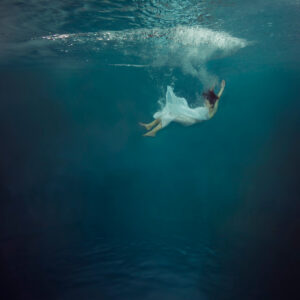
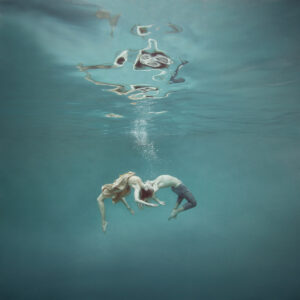
Hi Mallory, these are amazing pieces! Are you the model as well?
Thank you! These are just a few of my best-selling on Saatchi. I get asked that question a lot but no, I’ve never been in front of the camera underwater.
Do you have a vision before shooting these?
I usually have a theme and concept to start then I choose models/dancers to act out my vision. I pretty much shoot in pools around Los Angeles, except once in the Cenotes in Mexico.
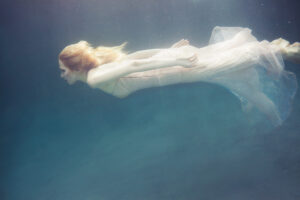
How do you direct the models? I imagine it must be difficult physically for both sides…
It becomes more of a director role where I tell them what I want them to do up front, then it’s action time. It’s more like filming than a traditional photoshoot.
I love working with dancers because they are graceful but mainly because they can take in and perform directions well.
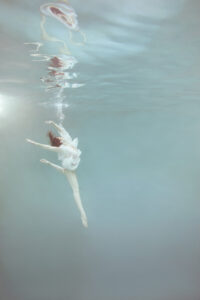
How did you got into dance and underwater photography? Did you always know that would be your subject?
I was a ballerina myself for 24 years!
I had to stop due to an injury, so I found that photographing dancers was my way of staying connected to that world and also I could utilize my knowledge to direct and choreograph them.
I started out shooting dancers in the studio and I became quickly frustrated.
So I realized my problem was GRAVITY!
The water was a way to solve that problem. I tried it 15 years ago and never looked back.
I’ve found the water to be such a healing place and its just magical to create in it
I sometimes get so excited when I get a moment happening underwater that I know I caught and I giggle underwater.
Your Van Gogh avatars have the same quality of magic fluidity. Can you tell us a bit about your experience in The Other Avatars?
Yes, where to begin…. when I was first approached about the project I thought, I can’t do this underwater?! That would be so hard and crazy
Then, I thought, ‘well, I do co-own a photo studio, I could shoot it in there. But how do I keep my style…?’
The next challenge was to keep the through line of my work of beauty, movement, quietness, sensuality, mystery, and ethereal dreaminess. I wanted to evoke the three main elements that tie my work to Van Gogh’s: Beauty, emotion, and color.
Next was finding a subject to shoot. I mainly shoot with women so that was my first question to Monty was: Can this be a female subject?
I had been wanting to shoot a self portrait series for a while, and with Van Gogh’s self portraits as our theme, I thought, ‘Let’s make this self portraits!’
![]()
![]()
What did you find most challenging in your experience on this project?
The staging, props, and shooting was a pretty challenging experience. I think this project was particularly difficult for this medium since so much of it actually has to exist in really life.
I’m new, but I have yet to see any other avatar project out there that is photography based.
I spoke with Fares Micue, another photographer in this project, about the difficultly in this medium as well as my good friend and co-studio owner, Liz Bretz. She also photographed her avatars and we were both having our brains swirl up in a knot getting each one planned out. Jus the simple idea that an avatar is facing to the left, that’s actually right for the model/subject/me.
![]()
I think there are only 4 photographers who used photography for this collection, so we are a pretty rare breed here! I’m also looking forward to creating some underwater NFTs in the future!
Would you say that you’ve discovered an appreciation and kinship towards Van Gogh as a fellow artist through working on The Other Avatars? What do you think he would have thought about an NFT project dedicated to him?
I think using his paintings in the background connected me the most. Painting in (in photoshop) his textures and deciding how I want it to blend with my photography was a little bonding experience.
And I doubt he would own a computer, so I don’t think he would know about NFTs. But I think if he was shown what all of these artists did using his work as his inspiration, I think he would feel seen and really appreciated.
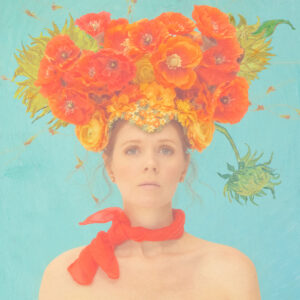
Love reading about all things art? You can have articles from Canvas, curated collections, and stories about emerging artists delivered straight to your inbox. Sign up for the Saatchi Art Newsletter.





